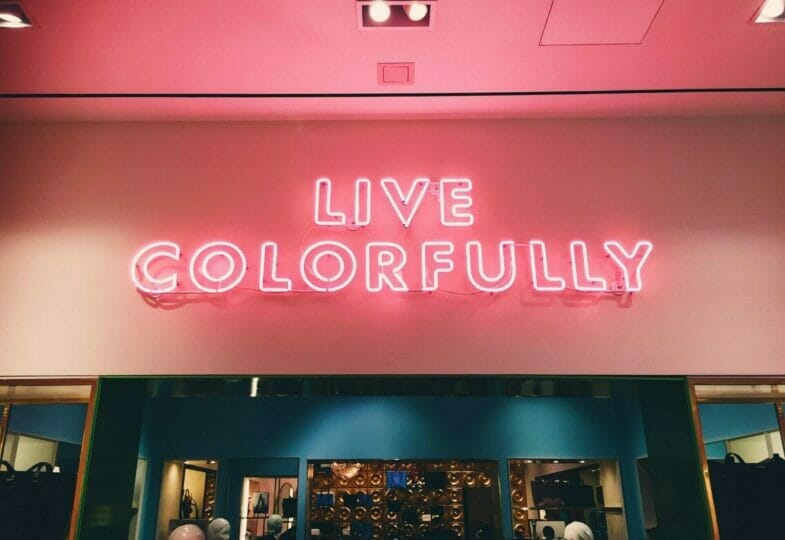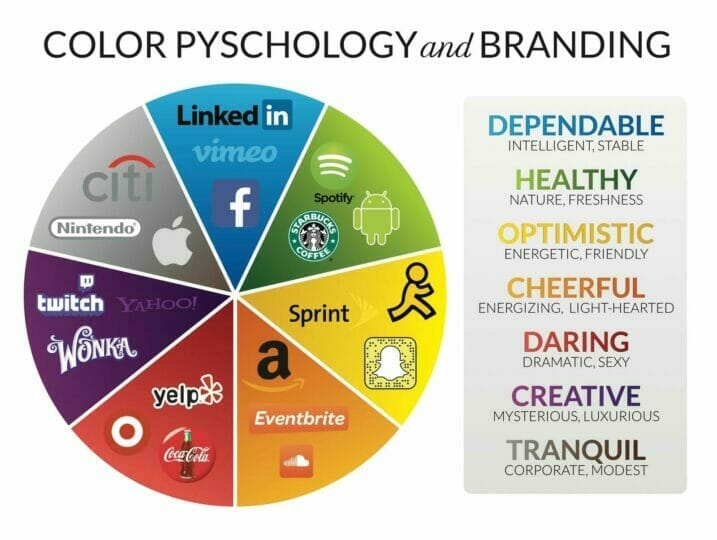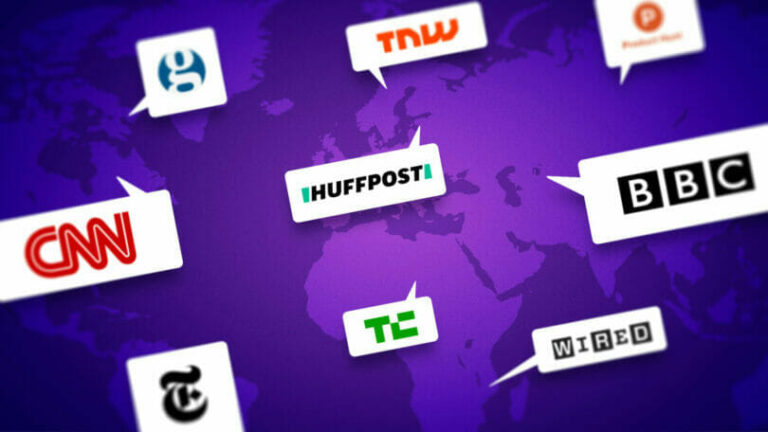The Psychology of Colors in Marketing and Branding in the 21st century

In the 21st century, the psychology of colors in marketing and branding is more important than ever. With the advent of social media and the rise of digital marketing, businesses must be aware of the impact that colors can have on their target audiences.
Studies have shown that certain colors can evoke certain emotions in people. For example, blue is often associated with feelings of calm and serenity, while red is often associated with excitement and energy. By understanding the psychological effects of colors, businesses can use them to their advantage in order to better connect with their customers and create a more compelling brand identity.
While there is no one-size-fits-all approach to using colors in marketing and branding, it is important to consider their psychological effects when making decisions about your company’s visual identity. With the right strategy, colors can be a powerful tool for creating a strong and memorable brand.
What is color psychology?
Color psychology is study of how colors affect our emotions and behaviors. Different colors can evoke different feelings, and color can be used to influence our moods and thoughts. For example, blue is often associated with calmness and relaxation, while red is often associated with excitement and energy. Color psychology can be used in many different ways, such as in marketing and advertising, product design, and even interior design.

How Do Colors in Marketing Influence People?
Colors in marketing can influence people in both positive and negative ways. For example, the color red can stimulate appetite, while the color blue can create a feeling of calm. Therefore, when choosing colors for marketing materials, it is important to consider the message you want to communicate and the effect the colors will have on your target audience.
Why Is Color Psychology Important in Marketing?
Color psychology is important in marketing because it can be used to influence customers’ emotions and perceptions. For example, certain colors may evoke certain feelings or associations that can lead to customer behavior. For instance, the color red may be associated with excitement or urgency, which could lead customers to make impulsive purchases. Additionally, colors can also be used to create a desired atmosphere or message. For example, warm colors like yellow and orange may create a friendly and inviting atmosphere, while cool colors like blue and green may convey a more professional and trustworthy image. Ultimately, by understanding how color psychology works, businesses can use it to their advantage to increase sales and appeal to their target market.
Color Psychology in Marketing and Branding is All About Context
Color psychology is a field of study that looks at how colors affect our moods, emotions, and behaviors. While there is no definitive answer as to how colors influence us, some general trends have been observed. For example, warm colors (such as red, orange, and yellow) are often associated with energy, excitement, and happiness, while cool colors (such as blue, green, and purple) are often associated with calmness, relaxation, and peace.
When it comes to marketing and branding, context is everything. The colors you use in your marketing materials should be carefully chosen to match the message you’re trying to communicate. For example, if you’re selling a product or service that’s all about fun and excitement, using warm colors in your branding will help convey that message. On the other hand, if you’re selling a product or service that’s meant to be calming and relaxing, using cool colors in your branding will help get that across.
Of course, this is just a general guideline – ultimately, it’s up to you to decide what colors will work best for your brand. So experiment with different color combinations and see what feels right for your business.
Color Psychology: How Color Meanings Affect Your Brand
Color psychology is the study of how colors affect our emotions and behavior. Different colors can evoke different feelings, impacting how people perceive your brand. For example, blue is often associated with trustworthiness and calmness, while red is associated with excitement and energy. Using the right colors in your branding can help you create desired emotional response in your customers.
Culture and Gender in Color Psychology
Culture and gender play a role in color psychology. Different cultures have different associations with colors. For example, white is often associated with purity and innocence in Western cultures, while it is associated with death and mourning in Eastern cultures. Gender also plays a role in color psychology. Studies have shown that men and women tend to have different color preferences. Women prefer softer, more feminine colors like pink and purple, while men prefer bolder, more masculine colors like blue and green.
How warm colors make people feel

Warm colors are associated with fire, heat, and sunlight. They are typically vibrant and can stimulate feelings of happiness, energy, and excitement. While different people may react differently to warm colors, they generally make people feel more positive and upbeat. So if you’re looking to create a cheerful atmosphere, using warm colors is a great way to do it.
How to color meanings vary by culture
How colors are interpreted can vary significantly from one culture to another. For example, in many Western cultures, white is associated with purity and innocence, while in Eastern cultures, white is often associated with death and mourning. Similarly, red can represent love and passion in the West, but anger and danger in the East. It’s important to be aware of these differences when traveling or working with people from other cultures to avoid any potential misunderstandings.
How to test your color marketing strategy
To test your color marketing strategy, you’ll want to consider what colors are most associated with your brand and product. Then, you’ll want to create a few different marketing materials using different color schemes, such as ads, flyers, or website banners. Once you’ve created these materials, you’ll want to track how customers respond to each one. Do they seem to engage more with certain colors than others? Are there certain colors that result in more sales or clicks? By tracking customer engagement and response, you can fine-tune your color marketing strategy to ensure it’s as effective as possible.
The problem with the psychology of color in marketing and branding
There is a lot of debate surrounding psychology of color in marketing and branding. Some experts believe certain colors can influence a person’s mood or emotions, while others are skeptical of these claims. However, there is one thing that everyone seems to agree on: the use of color in marketing and branding can be a powerful tool.
When used correctly, color can help to create an emotional connection with a brand. It can also be used to convey a certain message or feeling. For example, the color blue is often associated with feelings of calm and relaxation, while the color red is often associated with excitement and energy.

However, the problem with using color in marketing and branding is that it is often difficult to control how people will react to it. Different people have different associations with different colors, so it can be hard to predict how someone will respond to seeing a particular color used in marketing materials. Additionally, colors can also be interpreted differently depending on the culture or context in which they are seen. For example, the color white is often associated with purity and innocence in Western cultures, but it can be seen as a symbol of death and mourning in Eastern cultures.
What Happens When Color combinations are used for marking purposes?
When color combinations are used for marking purposes, they can help to create a more easily identifiable and legible mark. This can be especially helpful when marks need to be made quickly or from a distance. Additionally, using different colors for different purposes can help organize information and make it easier to find later.
Which Colors Do the Different Genders Prefer?
There is no definitive answer to this question as everyone has different preferences. However, some research has suggested that certain colors may be more popular with certain genders. For example, pink is often seen as a feminine color, while blue is seen as more masculine. This is likely due to cultural associations and stereotypes rather than any inherent quality of the colors themselves. Ultimately, asking them directly is the best way to determine which colors someone prefers.
What does psychology say about colors?
Psychology says that colors can affect our moods, emotions, and even our behavior. Different colors can evoke different feelings and even influence our thoughts and actions. For example, the color red is often associated with danger or anger, while blue is often seen as calming and relaxing.

Understanding color for the marketing purposes
Color is one of the most important elements of marketing. It can be used to attract attention, create an emotional response, and influence customer behavior. When used effectively, color can help to brand a product or company, convey a message, and even influence the mood of consumers.
While there is no one-size-fits-all approach to understanding color for marketing purposes, some general guidelines can be followed. First, it is important to consider the psychology of color. Different colors can evoke different emotions, so choosing a color (or colors) that will create the desired effect is important. Second, it is important to consider the target audience. Different demographics may respond differently to different colors, so choosing a color (or colors) that will appeal to the target consumers is important. Finally, it is important to consider the overall branding strategy. The chosen color(s) should be consistent with the brand identity and help reinforce the desired message.
What are the complementary colors in terms of marketing
Complementary colors are colors that are opposite each other on the color wheel. In terms of marketing, complementary colors can be used to create contrast and visual interest. For example, a company might use a combination of blue and orange in their branding to make their products stand out from the competition.
Conclusion of The Psychology of Colors in Marketing and Branding in the 21st century
In conclusion, the psychology of colors in marketing and branding is a complex and ever-evolving field. As our understanding of the human brain and its response to color continues to grow, so will the ways businesses utilize color to capture attention, create an emotional connection, and build brand equity. While there are no hard and fast rules when it comes to color selection, an understanding of the basics of color psychology can give businesses a leg up in creating a visually appealing and effective marketing campaign.




